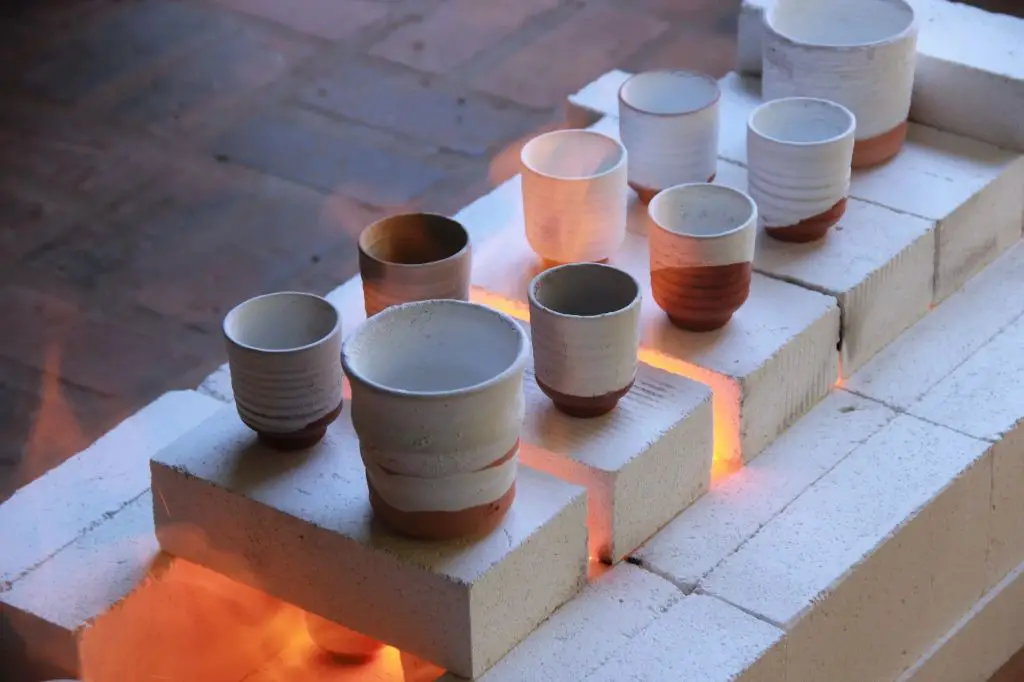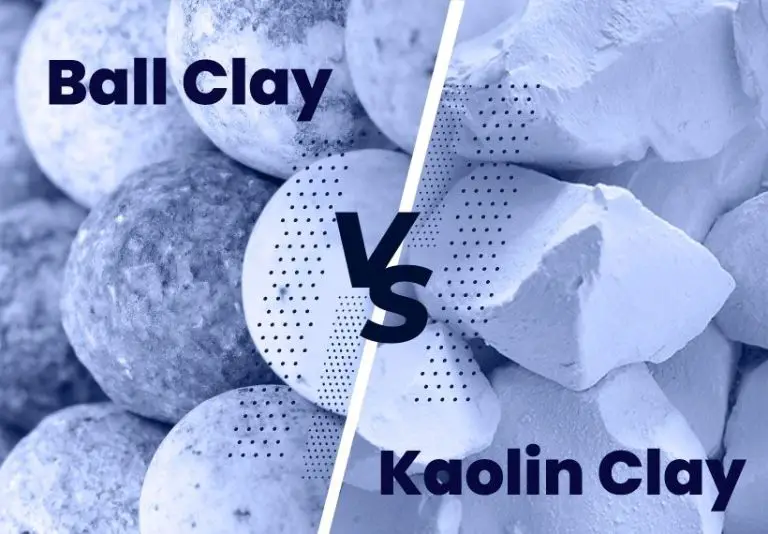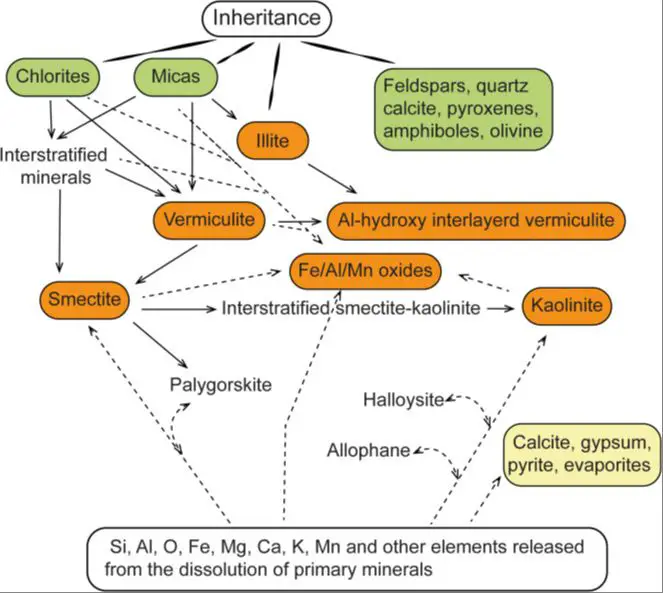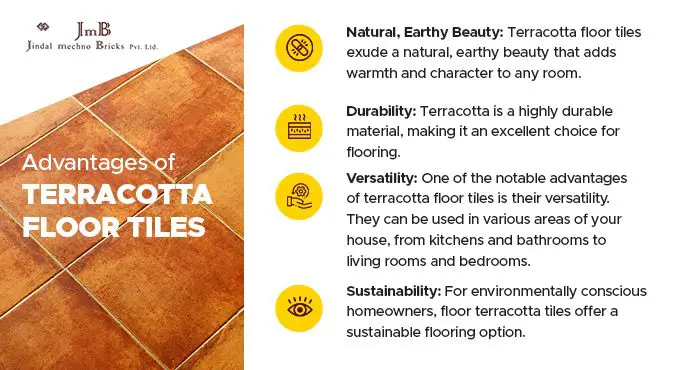What Is An Earthenware Clay?
Earthenware clay is one of the most common and versatile types of clays used in pottery and ceramics. It is fired at lower temperatures than other types of clay, which makes it more porous and softer than stoneware or porcelain (Understanding Earthenware Clay: A Comprehensive Guide).
The definition of earthenware is any pottery fired below 1200°C (2192°F). The clay body maintains its porous, permeable nature after firing, allowing air and moisture to pass through. Due to its open pores, earthenware absorbs water and must be glazed to make it watertight for holding liquids. Common clays used for earthenware include red and brown clays that contain iron oxide, giving the pottery a reddish color.
Earthenware has been used for thousands of years to produce functional pottery items like plates, mugs, vases, and containers. It can also be sculpted into decorative objects. The low firing temperature allows a wide range of decorating options like colored glazes, slip painting, and relief textures. Earthenware is valued for its rustic, earthy qualities and is frequently used by ceramic artists and hobby potters today.
Composition of Earthenware Clay
Earthenware clay is primarily composed of clay minerals such as kaolinite, montmorillonite, and illite [1]. These clay minerals are hydrous aluminum phyllosilicates, meaning they contain silicon, aluminum, oxygen, and water in their molecular structure. The sheet-like arrangement of silica tetrahedra and alumina octahedra in clay minerals gives clay its signature plasticity when mixed with water.
Specifically, kaolinite is made up of alternating tetrahedral silica and octahedral alumina sheets, montmorillonite has an alumina octahedral sheet sandwiched between two silica tetrahedral sheets, and illite has layers of silica tetrahedra-alumina octahedra-silica tetrahedra. The particle sizes of these clay minerals is very small, often less than 2 micrometers. In addition to clay minerals, earthenware clays contain non-clay minerals like quartz, feldspar, mica, and iron oxides which modulate properties like firing color and shrinkage. The varying mineral composition results in the wide variety of clay textures and firing characteristics.
Types of Earthenware Clay
There are several major types of earthenware clay that are commonly used in pottery and ceramics:
Terracotta
Terracotta is a type of unglazed, low-fired earthenware clay. It has a distinct orange/red color from iron oxide content in the clay body. Terracotta has been used for centuries to make pots, sculptures, and building materials. Some of the notable properties of terracotta are that it is porous, durable, and suitable for both functional wares and ornamental pieces.[1]
Stoneware
Stoneware is a vitreous or semi-vitreous earthenware fired at high temperatures (1200°C–1300°C or 2200°F–2400°F) to create a non-porous body. It can be glazed or unglazed and comes in various colors from grey to brown. Stoneware is resistant to liquids, durable, and suitable for heavy-duty functional items like chemical lab equipment, crockery, and storage jars.
Red/Brown Earthenware
This type of earthenware is made from iron-rich clay fired at low temperatures to achieve a distinctive red or brown color. It encompasses a variety of regional wares like redware, Delftware, and Savannah Brown. Red/brown earthenware has an earthy aesthetic and slightly porous body suitable for flower pots, decorative tiles, and ovenware.
Slipware
Slipware refers to earthenware with decorated surfaces from colored liquid clay solutions (slips). The slip is applied to the leather-hard unfired clay body before a low-temperature firing. Typical slipware decoration includes sgraffito, feathering, and trailed slip. Slipware often has a folk art aesthetic and was historically used for commonplace functional pottery.
Properties of Earthenware Clay
One of the key properties that distinguishes earthenware clay from other clays is its porosity. Earthenware maintains its inherent porosity even after firing, making the finished products more permeable and absorbent compared to clays like stoneware. The porous nature allows air, liquid and even bacteria to pass through earthenware pottery (https://thepotterywheel.com/choosing-clay-for-a-beginner/).
The porosity of earthenware comes from its lower firing temperature range, typically between 1700°F and 2100°F. At these temperatures, the clay does not vitrify completely, leaving tiny pores permeating the material. This makes earthenware weaker in strength compared to vitrified clays. However, the porosity allows glazes to fuse and adhere very well with the body (https://www.soulceramics.com/pages/earthenware-stoneware-clay-difference).
In terms of plasticity and workability, earthenware clays tend to be quite smooth, flexible and elastic when wet. This allows artisans to easily shape and sculpt intricate or delicate forms. The firing range also makes earthenware clays quick and economical to fire compared to other clay bodies.
Shaping and Forming
There are several techniques used to shape and form earthenware clay. The three main methods of handbuilding are pinching, coiling, and slab building. With practice, clay artists can create a wide variety of forms using just their hands and simple tools.
Pinching is likely the most instinctual and primitive forming technique. It involves taking a ball of clay and pinching it between the fingers and thumbs to form basic shapes like bowls, cups, and vases. Pinch pots are some of the easiest handbuilt vessels to make. Careful scoring and slipping between additions of clay can enable building more complex forms through pinching.
Coiling involves rolling out and stacking long coils or ropes of clay to build taller vessels. The coils are smoothed together from the inside using fingers or tools. Coiling enables making larger and more intricate handbuilt forms. It is also commonly used to attach handles, spouts, and other appendages like feet or legs.
Slab building uses flat sheets or slabs of clay assembled together to form boxes, plaques, tiles, cylinders, and more. The slabs can be cut into shapes using templates and assembled by scoring and slipping the seam edges. Slab building allows for both freeform asymmetry and geometric precision.
In addition to handbuilding, many clay artists also throw forms on the pottery wheel. Wheel throwing enables pulling up vertically symmetrical vessels with thinner, elegant walls. It requires practice to center clay and raise forms evenly on the rotating wheel head. Skilled throwers can make precise plates, vases, jars, and bowls.
Molds are also sometimes used, where liquid clay slip is poured into plaster or bisqueware molds. The clay conforms to the mold interior, allowing reproduction of identical forms.https://www.thecrucible.org/guides/ceramics/handbuilding/
Decorating and Glazing
Earthenware clay can be decorated and finished in a variety of ways to enhance its beauty and functionality. The most common methods are through applying colored glazes or slips.
Glazes are glass-like coatings applied to the clay before firing that melt and fuse to the clay body during the firing process. Glazes come in endless colors and effects. They serve both decorative and functional purposes by making the clay less porous and enhancing its beauty. According to Pottery Flashcards, glazes usually refer to refined white liquefied clay used to covering or decorating earthenware clay.
Slips are fluid clay suspensions with coloring oxides added that can be painted onto greenware (unfired clay) to add color and effects. They are similar to glazes but have a different composition that does not become glassy when fired.
Earthenware can also be decorated using techniques like engraving, carving, or stamping designs into the surface. Relief techniques like applying texture or sculpting shapes are also common. These add dimensional elements and visual interest to the finished surface.
With the range of glazes, slips, and surface techniques available, earthenware clay provides endless options for creative and artistic expression.
Firing Earthenware Clay
Firing earthenware clay is a critical step in the ceramic process that hardens the clay through controlled heating in a kiln. Earthenware clays are typically fired to low temperatures ranging from 1720-2190°F (930-1200°C), though they can be fired up to 2280°F (1250°C).
Kilns used for firing earthenware provide controlled heating environments that allow the clay to undergo physical and chemical changes. Kilns protect ware from rapid temperature changes and allow heat to thoroughly penetrate the clay body. Popular kilns used for firing earthenware include electric, gas, raku, and wood-fired kilns.
The atmosphere inside the kiln also affects the fired results. Oxidation firing refers to firing with adequate air circulation inside the kiln to fully oxidize compounds in the clay. Reduction firing limits air supply to create an oxygen-starved environment. Both methods produce distinctive effects in the final fired ware.
It’s important to follow the manufacturer’s recommended firing temperature range for any specific earthenware clay body. Firing below the minimum temperature risks under-fired pieces that may crack or break. Exceeding the maximum temp can over-fire the clay, leading to distortion, bloating, or melting.

Monitoring the kiln temperature with pyrometric cones helps to accurately determine when earthenware clays reach the ideal firing temperature for the clay body used. Multiple test cones with pre-determined melting temperatures are placed inside the kiln to visually indicate when critical temperatures are reached during the firing cycle.
Notable Earthenware Types
Some of the most notable and historically significant types of earthenware include:
Terra Cotta
Terra cotta, meaning “baked earth” in Italian, is a ubiquitous type of earthenware characterized by its red-orange color. It has been used since ancient times for pottery, sculpture, and construction due to its durability, affordability, and availability. Terra cotta works are particularly known from ancient China and the Mediterranean (1).
Ironstone
Ironstone is a hard, dense type of earthenware that was developed in England in the early 1800s. It is often called “stone china” and was created to provide a durable, affordable alternative to porcelain. Ironstone is notable for its moderate translucency compared to opaque earthenware and resistance to chipping. It was mass produced and exported during the Victorian era (2).
Faience
Faience refers to tin-glazed earthenware, a type of pottery popular from the Middle Ages onwards, often used for tableware. It involves applying an opaque white glaze with tin oxide to fired clay vessels. Faience became particularly associated with brightly painted ornamental wares from Renaissance Italy, especially majolica (3).
Majolica
Majolica is a common type of faience earthenware distinguished by its detailed painted decoration, often floral or figurative designs. Especially popular in Italy from the 15th to 18th centuries, majolica reflects changing tastes in the Renaissance and Baroque periods. Its brightly colored lead glazes gave it a more glossy finish than traditional faience (4).
Sources:
(1) https://www.hibiki-an.com/contents.php/cnID/90
(2) https://www.hibiki-an.com/contents_pickup.php/cnID/96/p/1462_1443_1534
Modern Uses
Earthenware clay continues to be widely used in modern times. Its durability, workability, and low cost make it ideal for many applications.
One of the most common uses today is for art and pottery. The red-orange color and textured look of earthenware appeals to many artists. It can be shaped by hand or on the potter’s wheel into cups, vases, bowls, and sculptures (Wikipedia). Earthenware requires only low firing temperatures, which allows a wide range of decorative glazes and paints.
Earthenware tiles are another popular use due to their natural look. The tiles can be made in various earth tones and textures to imitate stone or wood for floors, walls, countertops, and backsplashes (Seattle Pottery Supply). They provide an affordable but attractive option for construction and remodeling projects.
On a larger scale, earthenware can be used to make bricks and other masonry units. Its high compressive strength, coupled with low cost, makes it suitable as a fundamental construction material for houses, walls, foundations, and landscaping features worldwide.
History and Origins
The origins of earthenware pottery can be traced back over 12,000 years to some of the earliest human civilizations. Archaeological evidence shows that prehistoric cultures including the Jōmon in Japan, Yangshao in China, and Native American groups produced basic earthenware vessels for cooking, storage, and other utilitarian purposes. These early earthenware objects were hand shaped from clay and fired at relatively low temperatures in open bonfires or pit kilns.
In the ancient world, more advanced pottery techniques developed amongst early civilizations like Mesopotamia, ancient Egypt, the Indus Valley, Greece, and Rome. Fine earthenware craftsmanship produced vessels with decorative painted designs and glazes. Distinct regional styles also emerged. Source
Earthenware production flourished and spread along trade routes to become a common material for pottery across Europe, Asia, and the Middle East over thousands of years. It remains a ubiquitous and versatile ceramic ware to this day.





